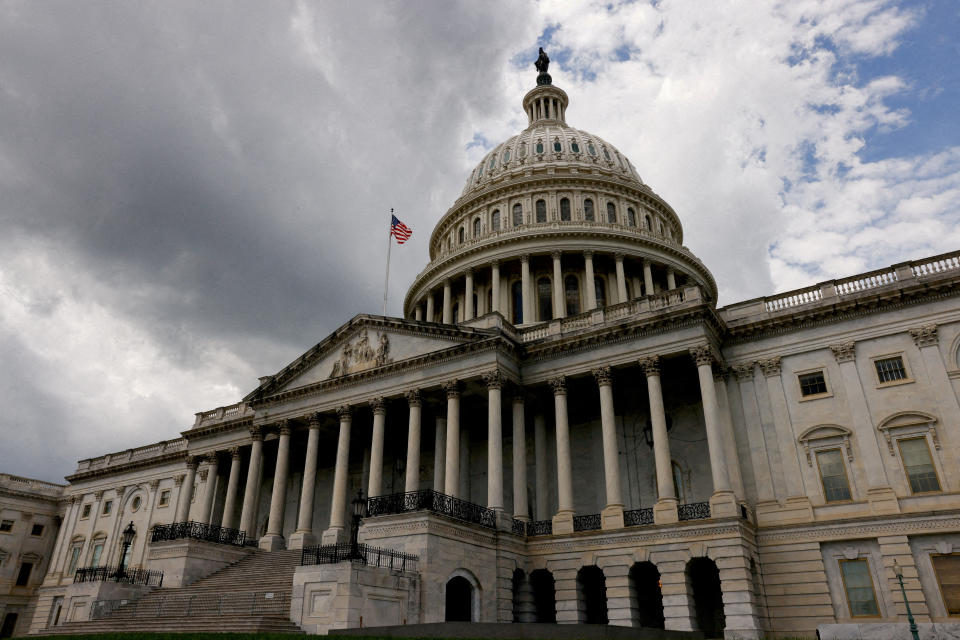
Childcare costs accelerated throughout the pandemic. Now many parents are concerned they are going to spike again in 2024.
A new Care.com survey of US adults who pay for professional childcare found that a majority of respondents expect their childcare costs to increase by $7,000 this year, or $600 or more per month.
They expect that to happen largely because of the expiration of a pandemic-era safety net that helped stabilize the childcare industry across the US. Staffing shortages at day care centers are also expected to act as an upward pressure on prices.
The expenses associated with caring for children are putting increasing strain on American households after years of elevated prices for everything from food to housing.
Over the past decade the cost of daycare has risen roughly 36%, outpacing the rise in inflation during that time, according to data from the Bureau of Labor Statistics.
The annual increase for these prices during the month of December was 4.5%, which was also higher than the overall rate of inflation.
The concern some economists and experts have is that these accumulated costs could ripple through the labor market and the economy by making it more difficult for some parents to keep working and holding down consumer spending.
“This is a major American economic issue,” Care.com CEO Brad Wilson said.
The costs of care
How much of a burden is it for Americans? Families spent nearly a quarter of their household income on childcare last year, according to Care.com, with more than a third dipping into savings to pick up the costs.
The average cost for full-time, in-home infant care by a nanny was on average $39,832 per year for one child, according to Care.com data. It was even higher in cities like New York and San Francisco, where the expense could top $48,000 or $58,800, respectively.
Day care is also pricey, averaging more than $15,000 annually for an infant. In more expensive cities like Washington, D.C., it can be as much as $22,000 a year.
There are signs these costs are beginning to wear down some households. Families with childcare payments have been spending at a slower pace than the rest of the population and are also dipping into savings at a faster rate, according to customer bank account data analyzed by Bank of America (BAC).
Bank of America said the average childcare payment per household has risen over 30% since 2019 for its customers. Middle- and upper-income families — those with annual income of $100,000-$250,000 — experienced the biggest jump.

These increases might be driving some parents out of the workforce, says Bank of America economist Anna Zhou. They may not be able to afford the level of care their children need.
“We know that there’s tens of billions of dollars that come out of the economic ecosystem just by not having families show up for work,” said Wilson of Care.com.
Keeping women in the workforce
What many experts are watching closely is the female labor force participation rate, since the lion’s share of missed work typically impacts women. An analysis from the US Census Bureau found women are more than 80% more likely to miss work due to childcare than men are.
The workforce participation rate for women did hit a record high of 77.8% in 2023 thanks to a tight job market and the rise of home-based work that allowed for more flexibility.
But this rate has slipped slightly in recent months. And even at 77%, the participation rate still trails other wealthy nations. The US was last in 2023 among the 15 countries with the largest GDPs per capita, according to a Labor Department report.
There are, however, some signs of relief for beleaguered parents. The rate of cost increases for daycare did begin slowing in the second half of 2023, going from 6% in July to 4.5% in December, as part of a broader cooling of prices across the economy. And wages have increased faster than childcare costs over the last decade.
“The price of childcare is going to go up with, in general, the earnings of women,” said Nobel Prize winning Harvard University economist Claudia Goldin.
“And it’s going to go up with the earnings of higher-educated women to the extent that we keep on saying we want our children being taken care of by intelligent, capable, health-conscious, knowledgeable individuals,” added Goldin, who has tracked American women’s labor participation and the evolution of the gender wage gap.

Goldin said this country needs large economies of scale for childcare to become more affordable. She points to Sweden as an example, where she said childcare is subsidized by taxpayers.
When a couple has a baby, parents receive paid time off to care for it during the first year. Then once the child enters day care there is a subsidy that accounts for two-thirds of the cost through age 4. Sweden’s female labor force participation, as a result, is in the nineties.
“We cannot say the price is too high if, at the same time, we say we want extremely good care for our children,” Goldin said.
Help from Washington
In the US, Care.com advocates a savings plan for families that allows them to accrue up to $10,500 a year in pre-tax dollars for qualified dependent care.
This plan would not expire, unlike the last attempt in Washington to address this issue. In 2021, Congress passed the American Rescue Plan Act, which included $24 billion in grants to help stabilize the childcare industry and about $15 billion to help families afford care.
This helped day care centers that are squeezed by staff shortages and low profit margins; some had to close during the pandemic because they weren’t able to stay in business, acting as another pressure point on prices.
But after those funds from Congress expired at the end of September, a bitterly divided Washington is unlikely to grant that same sort of assistance again.

There is a new hope that a bill now under consideration could put more money in the hands of families with children. Lawmakers recently unveiled a bipartisan tax agreement that includes increasing the child tax credit for low-income families.
The tax credit would increase from $1,600 currently to $1,800 in tax year 2023, $1,900 in tax year 2024, and $2,000 in tax year 2025, per child, along with an adjustment for inflation.
Legislation would need to pass by the end of the month, a tall order for Congress, for it to apply to the current tax filing season.
“It certainly helps, but it only gets us part of the way there,” Care.com’s Wilson said.
Read the latest financial and business news from Yahoo Finance






